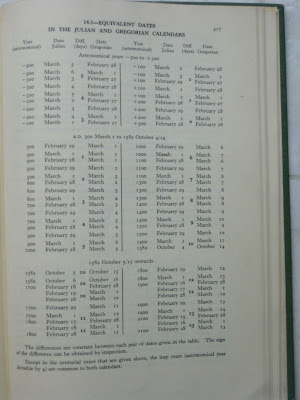 |
| Marriage of Buondelmonte, February 11, 1216 |
This painting, by Saverio Altamura from about 1858-60, depicts an historic event, one of only two such events occurring in my novel A Thing Done for which we have exact dates. The other took place a few weeks later, on Easter.
Exact dates from 1216 are something of a rarity in Italian history. Even contemporary chroniclers tended to glide over such specifics, or else round off, or re-order for dramatic effect, or just plain guess (which, I must admit, is a possibility with this one as well). But having two such precious dates to work with, it becomes possible to create a timeline, a structure for one's story.
Except. How specific am I being, really, when I make such calculations?
Not very. Today we are not even sure in what year these events took place. About half of the chroniclers say 1215, and the other half say 1216. Since the Florentine year did not at that time begin on the first of January, but rather on the 25th of March (the day of the Annunciation), that could account for some of the discrepancy. But as it turns out, it doesn't. Some historians picked one date and some the other, even once one has adjusted for the day the year was supposed to start.
So how did I decide which year to use? Easy - as a novelist, I get to choose what will work best for the story, all other things being equal, and it was handy for me to be able to incorporate some of the results of the Fourth Lateran Council, which was held in late autumn of 1215. So I set the book in 1216.
Next step, then, was to find out when Easter was that year. There are various online perpetual calendars which will calculate Easter and other moveable feasts of the church, and/or compute the day of the week for a given date. In putting in my year (1216), I came up against a question: one site wanted to know what calendar I wanted to use. (Others, perhaps a bit better programmed, figured that out from the date, though later dates might have posed problems, as we're about to see.)
Julian, I thought. But then I decided I'd better double-check that. It turns out that depending on where your event takes place, there are many more possible calendars than I had realized. Julian, though, was correct for my story, set in Florence in 1216.
The Julian calendar had been instituted to correct the growing discrepancies inherent in Rome's civil calendar. Julius Caesar decreed that the year we know as 46 B.C. should have 445 days, to make things come out right. This was known at the time as "the year of confusion." Afterwards, the Roman calendar would use a system of 365-day years, with a leap year every fourth year.
 |
| Julius Caesar |
 |
| Pope Gregory XIII |
Here's a table of the differences between the two:
But even prior to the messy changeover from Julian to Gregorian, all over Europe calendars were disparate and uncoordinated. Some places began their year on the first of January, others (like Florence) on 25 March, still others on the first of March (Venice), others on Christmas or Easter. Even those who agreed on the day didn't necessarily agree on the year. Florence and Pisa both began their years on March 25, but Pisa reckoned its year from the March 25 before A.D. 1, and Florence from a year later.
In an example cited by Joseph and Frances Gies, Reginald L. Poole posits a traveler setting off from Venice on March 1, 1245 (the first day of the Venetian year), and arriving in Florence only to find that it's still 1244. He then proceeds to Pisa (and to 1246). Going west, he would find himself back in 1245 when he got to Provence, and if he got to France before Easter (April 16), he'd be back in 1244.
I can't figure out if that would be worse than jet lag or not.
There's actually not much evidence that these discrepancies bothered anybody very much. In an agrarian society, one not yet ruled by the clock, a certain amount of slippage was permissible. The medieval view of the year was not like ours. It seems likely that our medieval forebears lost more sleep over currency discrepancies than dueling dates.
In any case, I was able to find the date of Easter in the year 1216: April 10. (Also, the date of Buondelmonte's wedding, February 11, was a Thursday.)
Oh, and you know that wondrous fact, that Shakespeare and Cervantes died on the same day?
Nope. True that they both died on April 23, 1616. But Miguel de Cervantes Saavedra died in Spain, which was on the Gregorian calendar and had been for three decades, whereas William Shakespeare died in England, which was not. Shakespeare actually died ten days after Cervantes did.
Thus, first this man:
and then this one:
As the latter said, in Hamlet, Act 1, Scene 5, "The time is out of joint."
Images in this blog post are in the public domain by reason of expired copyright.




No comments:
Post a Comment